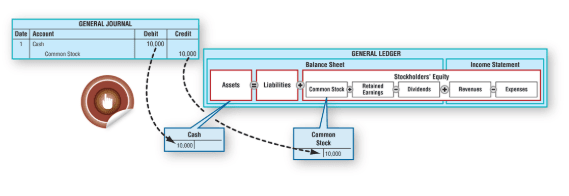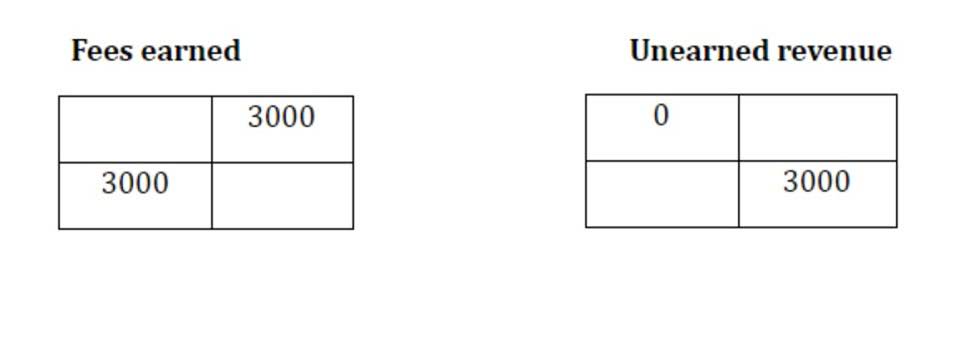
Ryan specializes in federal, state, and local tax compliance services for individuals, single-member LLCs, partnerships, and corporations. He serves a diverse clientele across various industries, ranging from small businesses to large corporations. Additionally, Ryan has experience in supporting individuals and businesses with SBA loan applications. In M&A, financial due diligence is a critical safeguard for investors and acquiring firms.
- Transitioning from organizing financial records, the next critical step in year-end audit requirements for businesses is meticulously preparing financial statements.
- Using a digital data room will allow you to share the PBC files or leverage those of your auditor.
- Open lines of communication can help build rapport with auditors and foster a collaborative atmosphere.
- Comprehensive audit preparation provides a clear understanding of the organization’s financial health.
- Notably, a study by the Association of Certified Fraud Examiners found that organizations lose an estimated 5% of their annual revenues to fraud, underscoring the importance of thorough audits.
- An even bigger challenge is that many standards don’t come with clear prescriptive guidance.
Management
- If you’re undergoing a continuous compliance audit, you may also want to revisit previous audit reports and ensure you’ve implemented its recommended remedial measures (if any).
- Once you have the full PBC list from the auditor, examine it to make sure that you understand everything that is requested of your company.
- A small public company or a private company may want to have an integrated audit performed when they are preparing for sale.
- By implementing the strategies discussed, businesses can confidently navigate the audit process.
- And CBIZ, Inc. (and its subsidiaries) practice as an alternative practice structure in accordance with the AICPA Code of Professional Conduct and applicable law, regulations, and professional standards.
- Tackling it early will allow plenty of time to research, analyze findings, and make good decisions.
- You issue your financial statements, and the auditor tests them to determine whether the statements are materially correct.
Your whole organization needs to know and understand that audit requests are the priority for finance and accounting professionals during this time of the year, unless other requests become imperative. Alert the auditor to any outside consultants, regulatory agency inquiries or future plans, and provide related reports and correspondence. If the company’s been audited before, the changes in its financial situation from the last audit should be taken into consideration. Material changes may affect the auditing process, such as new projects being invested in or government support and grants given. The idea is to get their perspective on the proposed changes and evaluate if anything can impact your compliance posture. You might need to provide notice far in advance because reputable auditing firms are often booked ahead.
Featured Resources
After drafting the financial statements, validating them for accuracy and compliance with accounting standards such as GAAP or IFRS is imperative. This involves cross-referencing figures with supporting documents and ensuring all calculations are correct. Audit work should focus on particular areas of change since this is where the biggest opportunity lies for errors to be uncovered or made.

Ensure Proper Documentation for Major Transactions
- A clean audit report indicates sound financial health and responsible management, making the business more attractive to potential investors and partners.
- An internal audit schedule helps ensure that audits are conducted regularly and consistently.
- On the other hand, the company under audit may exert pressure by not hiring a particular auditor or firm or by withholding auditing fees in the case of an unfavorable outcome.
- This involves ensuring that all financial statements are accurate and up-to-date, as well as verifying that all transactions have been properly recorded.
- Leaving it until the last minute to complete reconciliations for the bank, debtors, creditors, fixed assets and provisions will prove a sure-fire way to prolong and complicate an annual audit.
- That’s why it’s essential to draw up an audit timeline defining key milestones (such as controls testing and stakeholder reviews) beforehand.
After reviewing the recommendations, nonprofits should develop an action plan to address any identified issues. This plan should outline specific steps that will be taken to implement changes, assign responsibilities to staff members, and establish timelines for completion. By actively working on these recommendations, organizations can demonstrate their commitment to continuous improvement and accountability.

This process helps identify discrepancies, errors, or fraudulent activities, thereby maintaining the integrity of financial reporting. We have already discussed information systems auditing; other unique audits include operational and compliance audits. An internal audit should address these operational processes as well as the accounting procedures that affect them and are affected by them. Your auditors should be able to identify implementation issues and recommend remedial actions for improvement. Compliance audits deal specifically with the level of compliance with internal policies or external regulatory requirements. They play an essential role in ensuring that an organization adheres to global accounting standards and prevents fraudulent activities.
Navigating the Audit Process
Corporate accounting teams often see the annual audit as an unwelcome distraction. Staff struggle to assist auditors while also fulfilling their day-to-day job duties, dealing with regulatory changes, implementing new technologies and more. Auditing is important in maintaining trust and efficiency within the financial markets. Without auditing, companies can misstate their balance sheet financial records and performance and make themselves appear more profitable or successful than they actually are.
Risk

The railroad industry, in an effort to control costs and operating ratios, became an auditing pioneer. After the 1929 stock market crash, auditing became obligatory for companies that wanted to participate in the stock market. Investors came to rely on the financial reports that auditors produced as a part of an overall audit. In 1934, Congress commissioned the SEC as the https://www.bookstime.com/ regulatory agency for auditing requirements and standards.
Best Tips for a Successful Audit:

Give your auditor a call and provide them with the information they need to make sure it has received the correct accounting treatment. This way you avoid having to backtrack through months of documentation to explain yourself at the end of the year. At Bracken Rothwell, we are happy to assist our clients with such questions throughout the year, not just at the year end. PKF O’Connor Davies is the lead North American representative of the international association of PKF member firms. PKF International is a network of legally independent member firms providing accounting, tax and business advisory services in more than 400 locations in 150 countries around the world.
Engaging with Auditors and Providing Necessary Documentation

The Acumen app gives you access to key accounting data, in real time, whenever you need it. It enables you to calculate tax on company cars, track your milage, check the amount of tax you may be paying and more. Once you have the full PBC list from the auditor, examine it to make sure that you understand How to prepare for an annual audit everything that is requested of your company.
 Casinositesi777.com | En iyi canlı casino siteleri Casinositesi777.com en güvenilir canlı casino sitelerine ulaşarak sizde bedava casino deneyimini elde edebilirsiniz.
Casinositesi777.com | En iyi canlı casino siteleri Casinositesi777.com en güvenilir canlı casino sitelerine ulaşarak sizde bedava casino deneyimini elde edebilirsiniz.